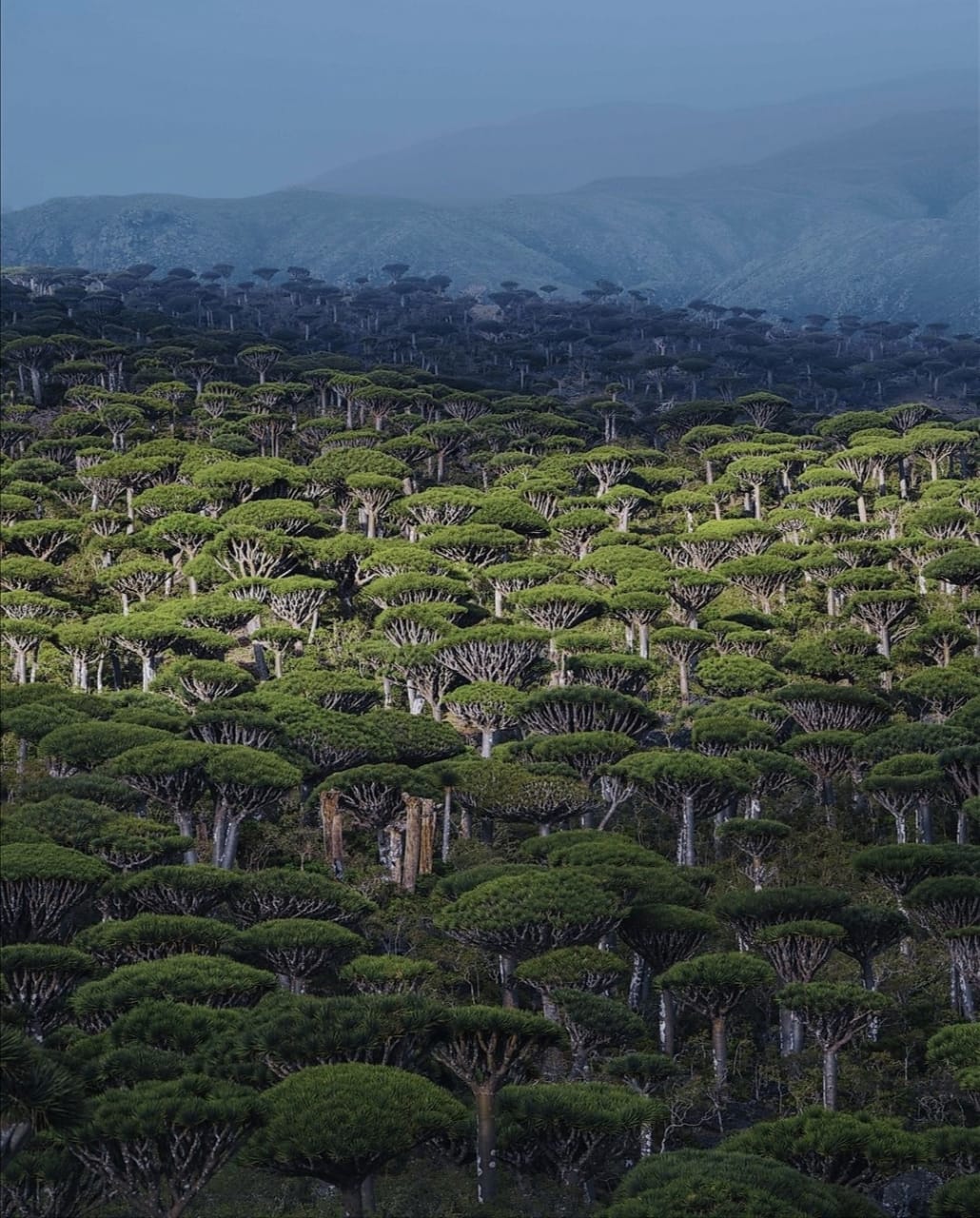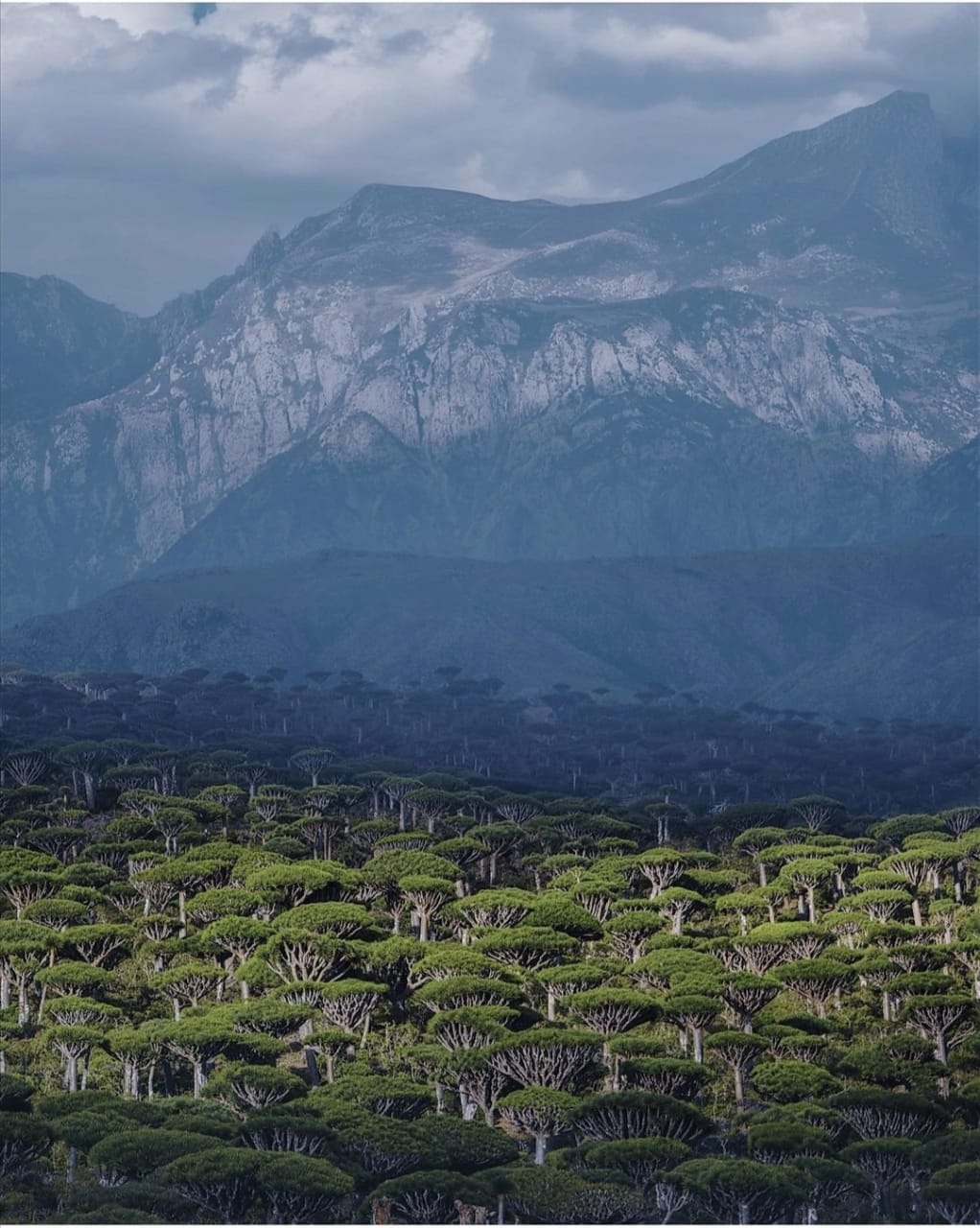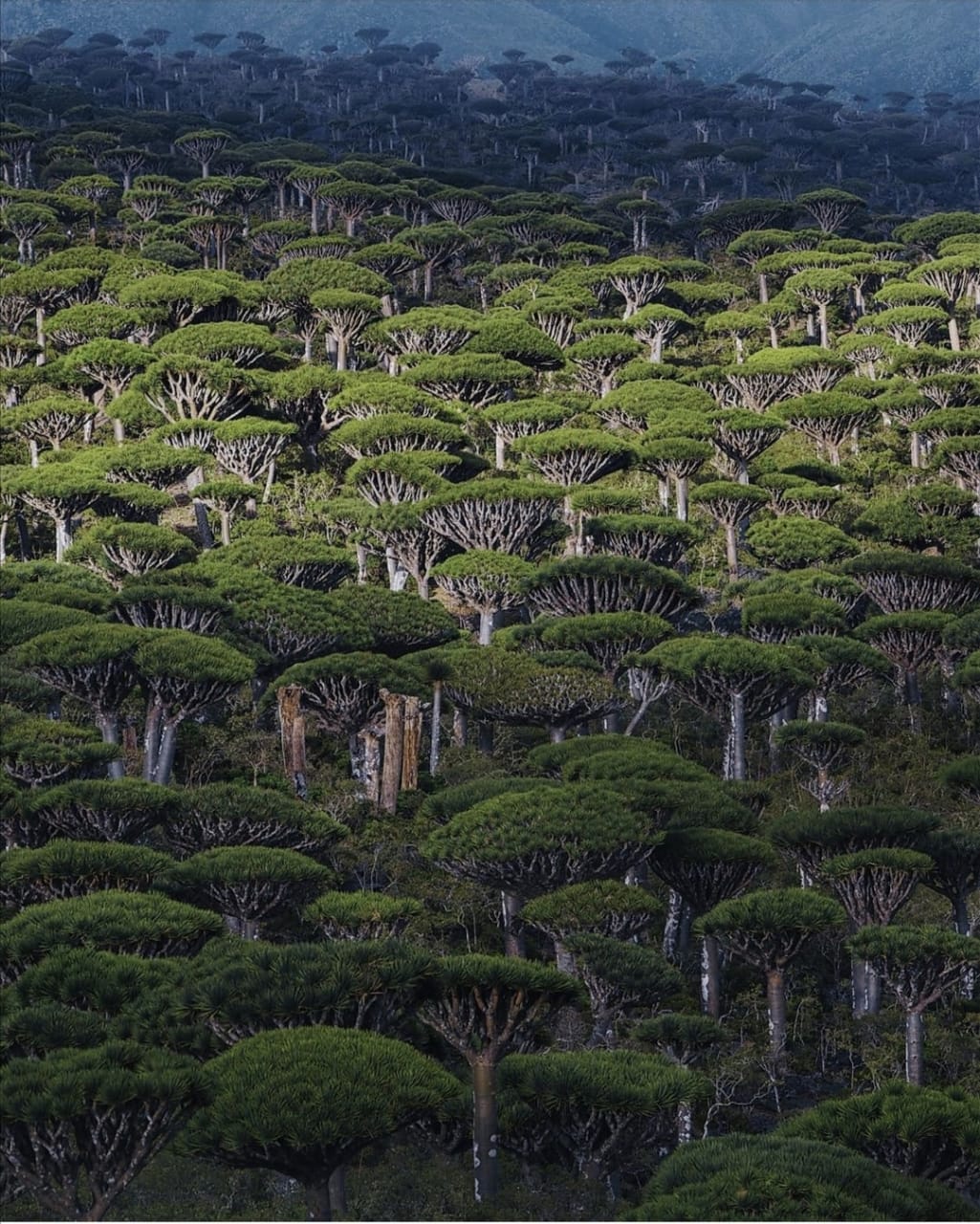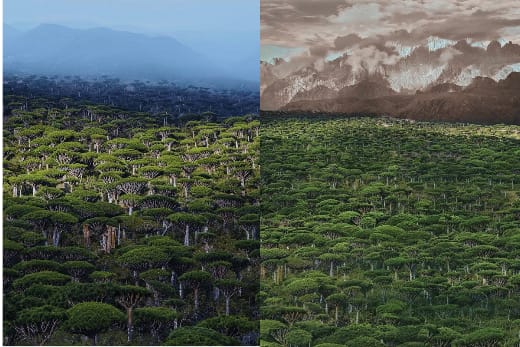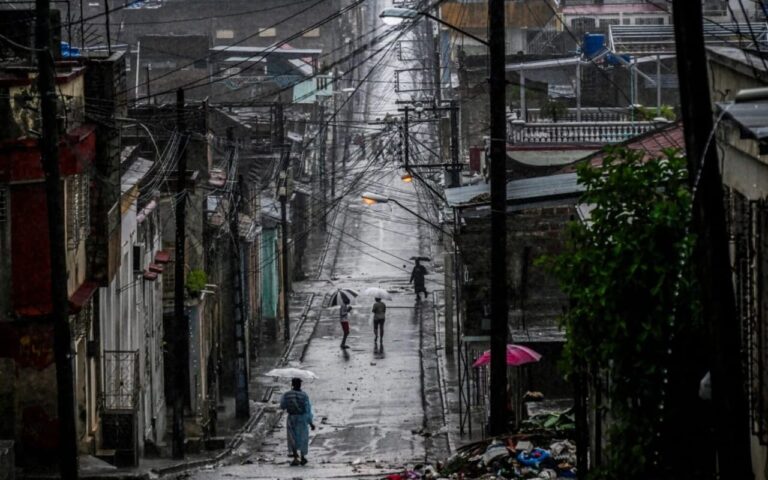The Socotra Dragon’s Blood Tree Forest is a captivating and unique landscape located on Socotra Island, Yemen. This forest is renowned for its iconic Dracaena cinnabari, commonly known as the Dragon’s Blood Tree, which is native to the island and found nowhere else on Earth.
What Is the Dragon’s Blood Tree?
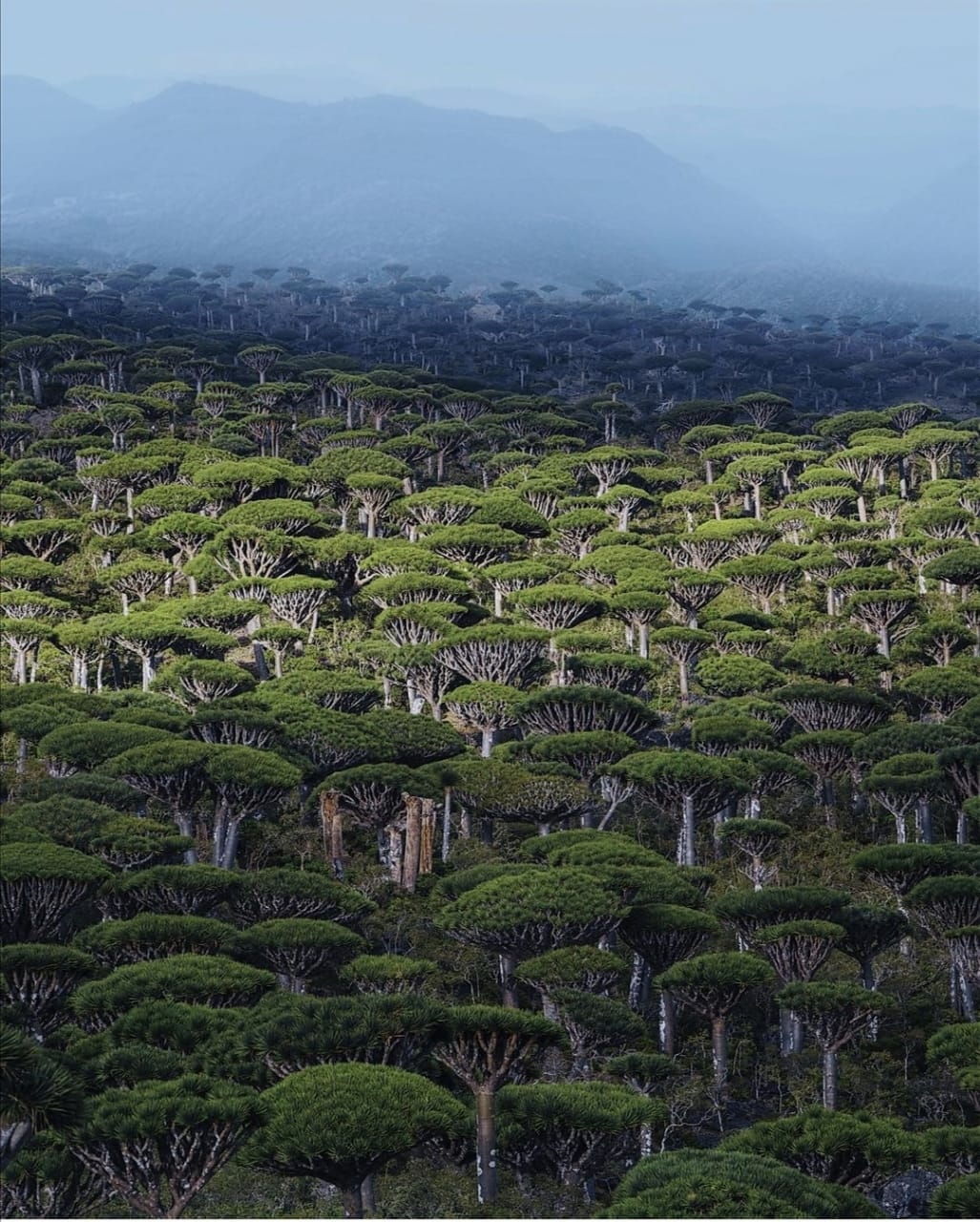
The Dragon’s Blood Tree is distinguished by its umbrella-shaped canopy and thick, gnarled trunk. Its name derives from the deep red resin it produces, known as “dragon’s blood,” which has been historically used as a dye and in traditional medicine .
The Forest’s Unique Landscape
The forest is situated on the rugged limestone plateaus of Socotra, particularly in areas like the Firmhin Plateau, which hosts the largest population of these trees. The trees here can live for 700 to 1,000 years, creating an otherworldly landscape that seems almost alien .
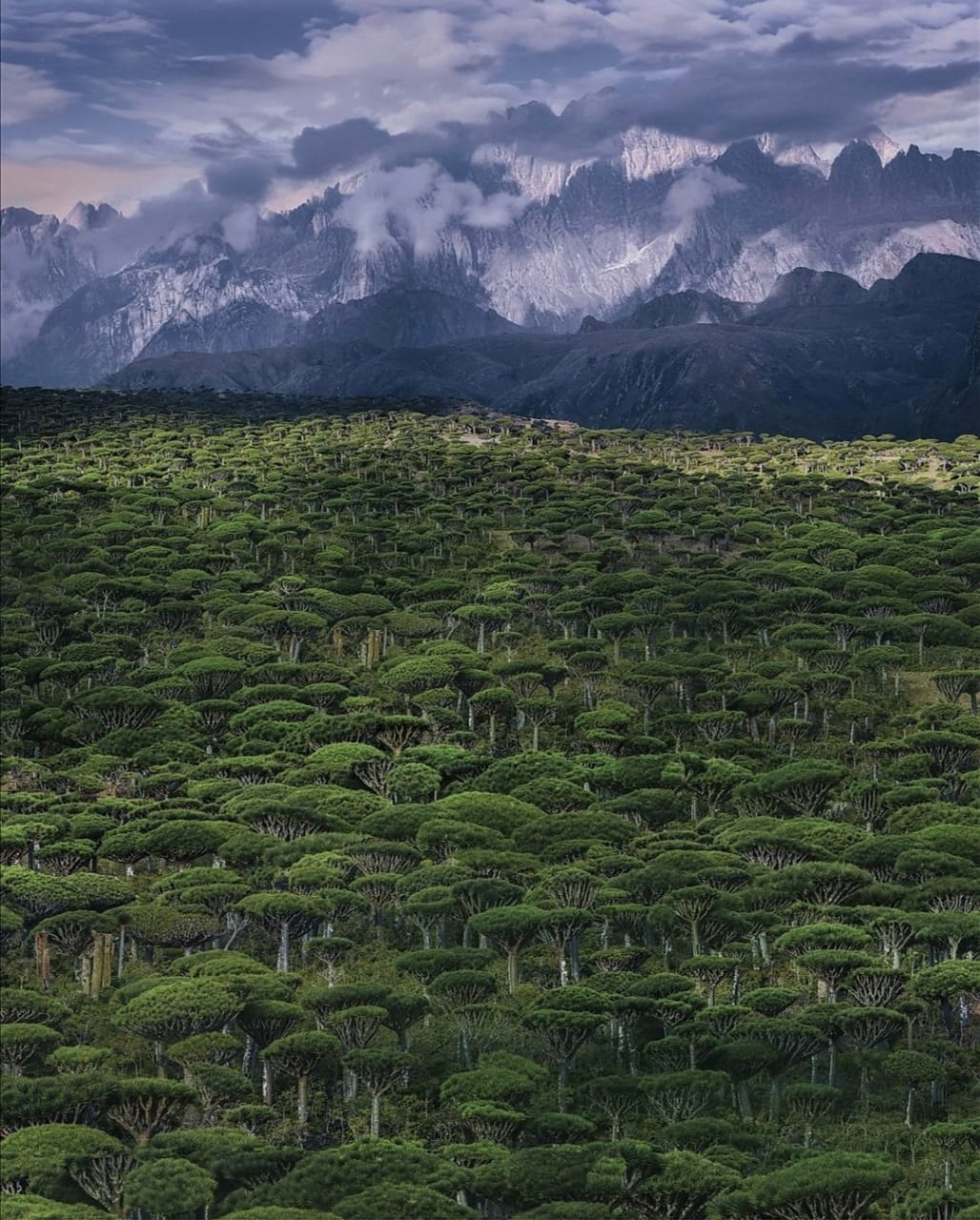
Ecological Significance
This forest serves as a critical habitat for various endemic species of birds, reptiles, and invertebrates. The unique microclimate beneath the canopy provides cooler temperatures and retains moisture, supporting a diverse ecosystem .
⚠️ Conservation Challenges
Despite its ecological importance, the Dragon’s Blood Tree Forest faces significant threats. Climate change has led to increased aridity, reducing the natural regeneration of these trees. Additionally, invasive species and human activities, such as overgrazing by livestock, further exacerbate the situation. Conservation efforts are ongoing, but challenges remain due to limited resources and political instability in the region.
